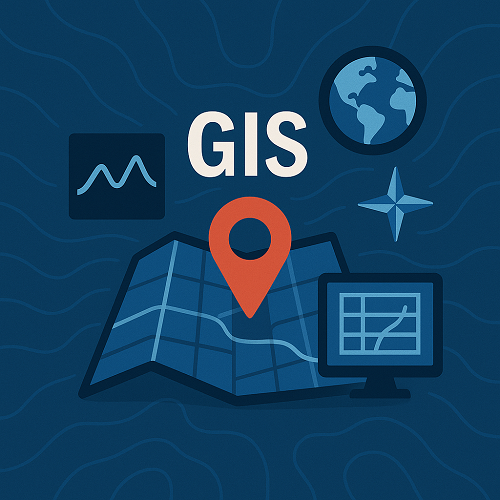TL;DR
- AI is now deeply embedded in GIS platforms, enabling smarter spatial analysis and real-time predictions.
- Open geospatial data initiatives are expanding collaboration and transparency across sectors.
- Blockchain technology is emerging as a secure method for geospatial data validation and provenance.
- Esri continues to lead with new tools and partnerships, driving interoperability forward.
- Industries are adopting more user-friendly and integrated GIS solutions for faster decision-making.
What’s new right now
In 2025, the Geospatial Information System (GIS) landscape is being reshaped by several pivotal trends. Advanced AI-powered mapping capabilities are enabling predictive analytics, anomaly detection, and optimized urban planning. Open geospatial data projects are creating unprecedented opportunities for cross-border environmental monitoring and disaster response. Blockchain-based geospatial solutions are being tested for secure land registry and asset tracking. Meanwhile, Esri’s latest collaborations focus on seamless interoperability and enhanced user interfaces, ensuring stakeholders can use GIS data without steep learning curves.
Why it matters
For business leaders, the evolution of GIS means faster, data-driven decision cycles and reduced operational risks. Retailers can optimize supply chains, municipalities can better target infrastructure spending, and insurers can refine risk models. For technical teams, modern GIS offers more automation, improved API interoperability, and robust integration with AI and IoT ecosystems. Security enhancements through blockchain can protect sensitive datasets from tampering, which is vital for public safety, legal, and defense applications.
Deep Dive: Key Trends Reshaping GIS
AI-Powered Spatial Intelligence
Machine learning models are leveraging high-volume spatial data to produce real-time hazard mapping, agricultural yield forecasts, and urban traffic simulations. By integrating AI directly into GIS platforms, analysts can shift from reactive mapping to proactive planning.
Open Data and Collaboration
Open geospatial data democratizes access to critical information. Governments and NGOs can now collaborate more effectively, sharing datasets that fuel environmental research and humanitarian efforts. Transparency fosters innovation, as startups can build location-based services without prohibitive data costs.
Blockchain for Geospatial Integrity
Blockchain technology provides immutable records for spatial datasets, mitigating the risk of data corruption. Applications range from public land ownership registries to supply chain verification.
| Approach | Core Benefit | Example Use Case |
|---|---|---|
| AI Integration | Predictive insights & automation | Urban traffic flow optimization |
| Open Data | Collaboration & transparency | Wildfire tracking |
| Blockchain | Data integrity & traceability | Secure land registries |
| Interoperable Systems | Reduced vendor lock-in | Multi-platform environmental monitoring |
Mini Case Study: Urban Flood Mitigation
Problem: A mid-sized coastal city faced recurring floods, damaging infrastructure and displacing residents each monsoon season. Traditional mapping methods couldn’t accurately predict flood zones.
Approach: The city deployed an AI-powered GIS platform integrated with IoT water sensors. Open rainfall and terrain data from government portals were cross-referenced. The team used blockchain-based verification to certify the integrity of critical floodplain maps.
Outcome: Within 12 months, predictive alerts improved evacuation times by 35%, and infrastructure repair costs dropped by 18%, demonstrating tangible ROI from modern GIS adoption.
Implementation Checklist
- Assess current GIS capabilities and identify integration gaps.
- Evaluate AI-ready GIS platforms for predictive and real-time analytics.
- Incorporate open geospatial datasets into your workflows.
- Consider blockchain-enabled solutions for data-sensitive applications.
- Train staff on new tools, ensuring user-friendly adoption.
- Set measurable performance indicators for GIS-driven initiatives.
Frequently Asked Questions
What is the biggest driver of GIS innovation in 2025?
The integration of AI with GIS is the most significant driver, enabling predictive capabilities and automation.
How does blockchain enhance GIS data security?
Blockchain creates immutable, verifiable records of geospatial data, preventing tampering or unauthorized changes.
Are open data initiatives safe for sensitive industries?
Yes, provided data governance and anonymization protocols are followed.
What ROI can businesses expect from modern GIS solutions?
ROI varies, but many organizations report reduced operational costs, faster decision-making, and improved risk management.
Do modern GIS systems require specialist training?
While advanced features may need training, many platforms now offer intuitive interfaces suitable for non-specialists.
Can GIS integrate with existing enterprise systems?
Yes, modern GIS platforms often provide APIs for seamless integration with ERP, CRM, and IoT systems.
Conclusion
The GIS industry in 2025 is defined by integration, transparency, and trust. AI, open data, and blockchain are not just buzzwords but practical tools reshaping how we understand and interact with our world. To harness these advancements and gain a competitive edge, explore our GIS services and see how innovation can transform your decision-making processes.
